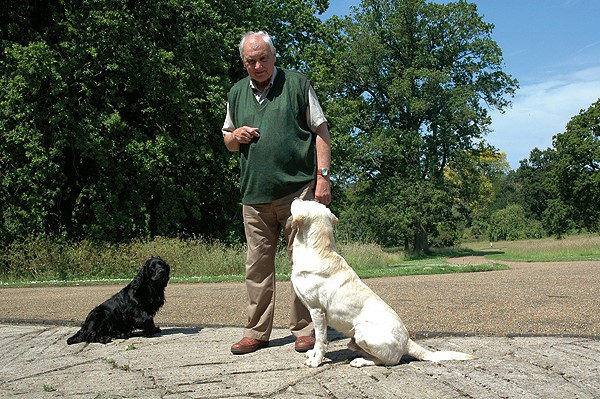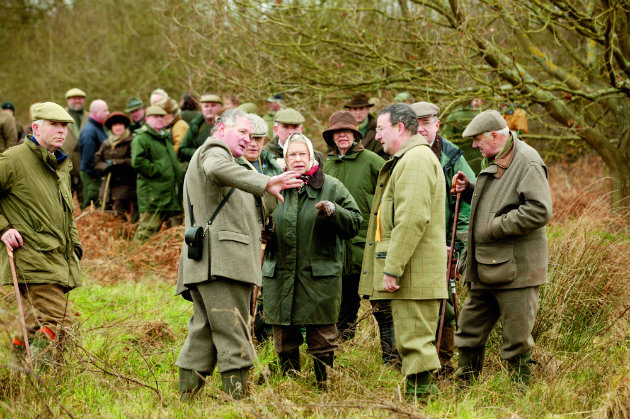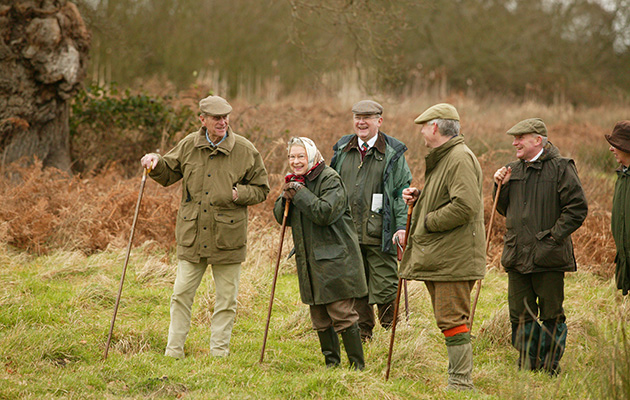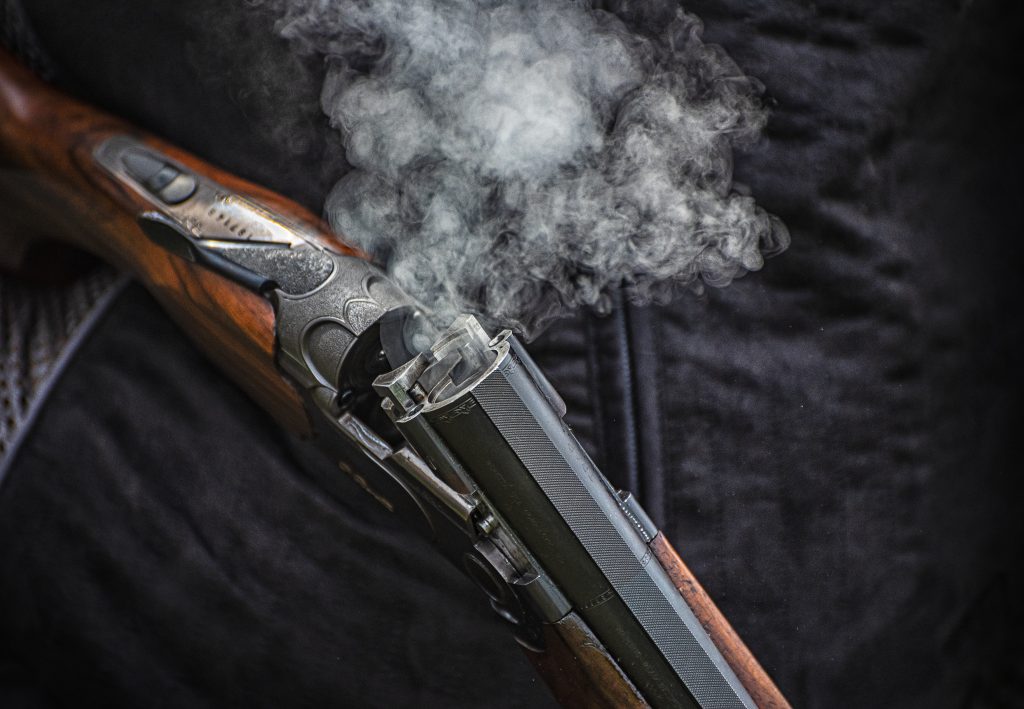In his 20 years of service to HM The Queen Bill Meldrum produced seven field trial champions from the royal…
Win CENS ProFlex DX5 earplugs worth £1,149 – enter here
A Royal picker-up
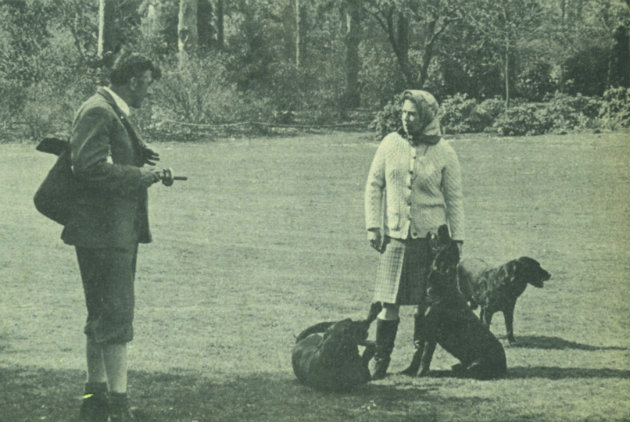
Gundogs have been a part of the Queen’s life from infancy. Her grandfather, George V, inherited his own father’s taste for gameshooting, as well as a more hands- on approach to the care and training of working dogs than Edward VII had ever shown. In the year before Elizabeth’s birth, following the death of his mother Queen Alexandra, George V took over the royal kennels at Sandringham. There he continued the breeding programme of Clumber spaniels and Labrador retrievers he had begun as Prince of Wales at nearby Wolferton kennels in 1911.
Almost a century later, though the Clumbers have gone, replaced by cocker spaniels, the royal kennels remain home to a line of Labrador retrievers bred and trained as working dogs for the Sandringham and Balmoral shoots of grouse, partridges, duck and pheasants.
A love of dogs and horses
In a commemorative book published to celebrate Princess Elizabeth’s 21st birthday in 1947, author Dermot Morrah wrote of Elizabeth as a child: “all kinds of amusement connected with animals had an irresistible appeal to the Princess.”
Horses and dogs were her first love, as they have remained: to her riding master, Horace Smith, she admitted her ambition to grow up to be “a lady living in the country, with lots of dogs and horses”. In this she was encouraged both by her family’s preferences and the habits of traditional country life the royal family did their best to maintain in Norfolk and Aberdeenshire.
Elizabeth’s grandfather, father and most of her uncles shot, sport witnessed by the Princess from an early age. Given the depth of royal purses, the family’s shooting was taken seriously, with a full staff of keepers and trainers. Though the royal kennels never again rivalled 100 dogs housed there by Edward VII, the young Elizabeth was able to visit around 40 working dogs kennelled at Sandringham throughout her childhood holidays.
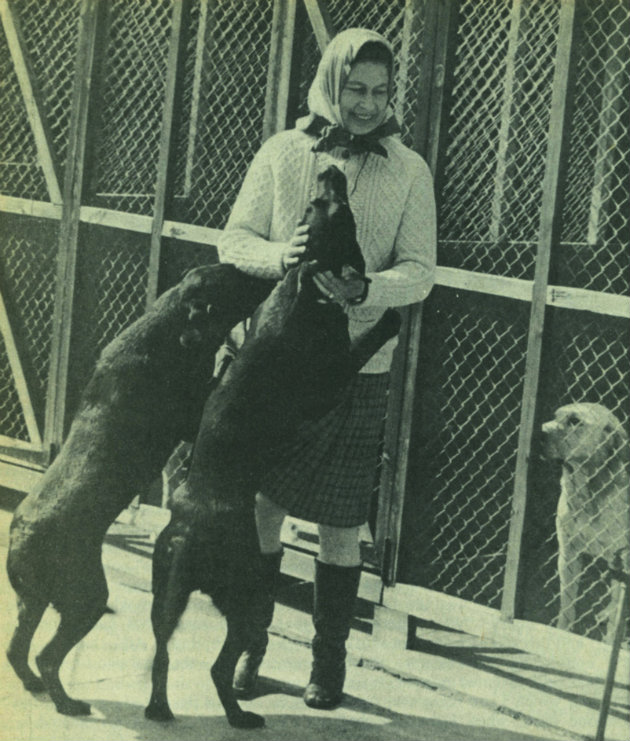
Her Majesty with her Labradors
In September 1933, when Elizabeth was seven, entrants in the King’s Lynn and District Kennel Society’s open Dog Show included her grandfather’s favourite black Labrador retriever, Sandringham Strapper. Gundogs, Elizabeth learned, were not only for working but showing and competition.
An instinctive understanding
Edward VII and George V were primarily terrier men. Edward owned Scottish, Skye and Irish terriers. On his desk, following the death of an Irish terrier called Jack in 1903, Edward kept a locket containing a lock of Jack’s coat. His rough-coated white terrier Caesar achieved international celebrity after walking behind Edward’s horse in the King’s funeral procession in May 1910.
George VI, by contrast, never shared his father and grandfather’s fondness for these doughty little dogs. His particular preference was for Labrador retrievers, which he kept both as gundogs and pets. Unusually, the Queen’s father favoured yellow Labradors, which were relatively little known at the time: the distinctive “golden” coat was first recorded as a breed colour as late as 1899 and did not achieve widespread popularity until considerably later. Yellow Labradors were among the dogs with which Elizabeth was brought up (one reason she has described keeping Labradors as “the normal thing to do”).
Photographs taken in 1936 at Royal Lodge, Windsor, show Princesses Elizabeth and Margaret with corgis Dookie and Jane and three of their father’s yellow Labradors: Mimsy, Stiffy and Scrummy. Elizabeth has remained loyal to the former, becoming the best-known owner and breeder of Pembroke corgis in the world; she has consistently favoured black over yellow Labradors, though her most successful competition dog, a three-times winner at the Game Fair, was a yellow Labrador called Sandringham Sydney (born while she was in Australia).
A true countrywoman
The Queen once said that if she had not become Queen she would have liked to be a lady living in…
George VI discouraged his elder daughter’s longing to work dogs in the field: in a spirit of royal hauteur the King considered it inappropriate for princesses to pick-up. Elizabeth was apparently undaunted. At Balmoral she hijacked the family corgis to track down shot birds. The short-legged Welsh farming dogs proved adept at finding grouse in the heather, albeit less effective at retrieving. But Elizabeth’s experience with corgis at least showed her the importance, in directing dogs, of understanding wind direction, natural cover, the direction of birds’ flight and where wounded birds are likely to head. By all accounts, her understanding from the outset was instinctive. But instinct alone is not enough. Elizabeth’s career as picker-up would have to wait until she became queen and the tutelage of her first trainer Jack Curtis and a pair of black Labradors called Sabre and Snare.
A new breeding line
In those first years of the Queen’s reign, the royal kennels were maintained on an essentially pre-war scale, their numbers necessitated by a shooting calendar that included up to 10 weeks a year at Balmoral, shooting six days a week. Scotsman Bill Meldrum, who was initially approached on the Queen’s behalf in 1963 by Lady hill-Wood, vice-chairman of the Labrador retriever Club of Great Britain, to succeed Jack Curtis as keeper and trainer, inherited kennels of 37 dogs and an annual routine that included one — or, grouse numbers permitting, two — stints at Balmoral, the remainder of the royal shooting taking place at Sandringham. around 20 dogs were driven between the two estates, invariably at night, in a lorry specially adapted for the purpose.
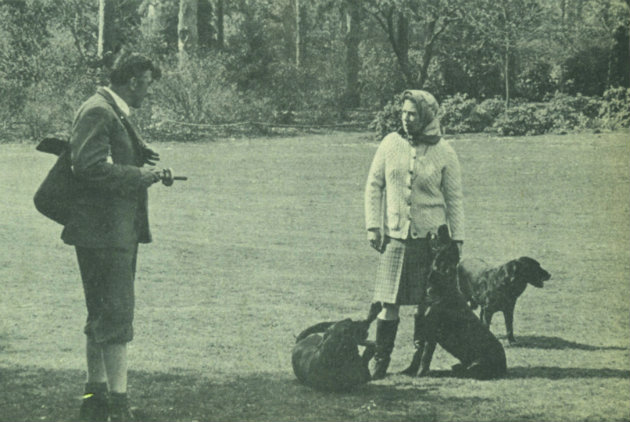
The Queen with Scotsman Bill Meldrum, who took over as keeper and trainer at the royal kennels in 1963
The Queen took a close interest in all aspects of the kennels’ management and the dogs’ performance in the field. From the beginning of his period in royal employment, Mr Meldrum understood that the Queen was interested in more than seamless days’ shooting: competitive as well as knowledgeable, she wanted to own a field trial champion. That aim would include a focus on improving the overall standard of Sandringham gundogs, partly through carefully chosen new blood.
Bill Meldrum came to the Queen with a fine track record: In 1963 he won the retriever Championship at Woburn Abbey with field trial champion Glenfarg Skid, a dog whose bloodline was to enter that of the Queen’s kennels and produce her first field trial champion — and one of her favourite dogs — Sherry of Biteout, known as Sherry. His new boss was eager to share his knowledge; she also possessed a degree of acumen in terms of understanding working dogs and their training.
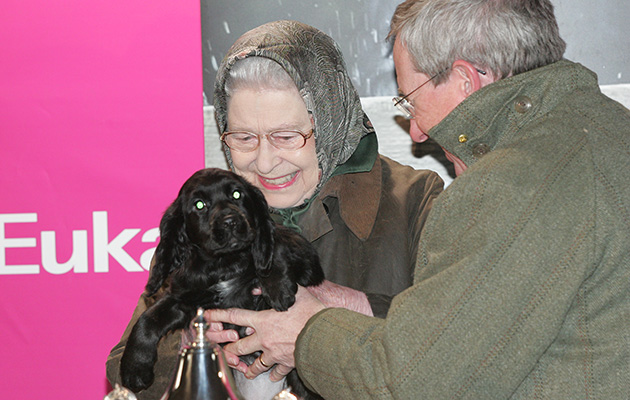
The Queen being presented with a cocker puppy at the cocker champ 2013
“She doesn’t put up with any nonsense from them and if they are going to be a bit wayward she would deal with them on the spot, how they should be dealt with,” remembered one of the Sandringham keepers.
Sport of champions
Among the Queen’s aims for the shoots at Balmoral and Sandringham were dogs that could be handled over lengthy distances. With Bill Meldrum’s regime of three or four walks a day, rigorous selection programme and some inspired training beginning at six months, success came quickly — in Skid’s first litter that produced Sherry. Sherry, who died in 1978, was the subject of the best-known anecdote of the Queen’s dog handling, when, after repeated attempts, and despite the distraction of nearby live grouse, she retrieved a bird late in the day from Balmoral peat hag at a distance estimated at some 800 yards.
So impressive was this feat — on the part of both dog and handler — that, much to the Queen’s embarrassment, Sherry’s successful return was greeted with a round of applause from the assembled Guns. Sherry was one of five Sandringham dogs to become field trial champions under Bill Meldrum’s watch.
“A lady in a headscarf”
Today the royal kennels of around 20 Labradors and cocker spaniels — a breed valued by the Queen for their ability to retrieve from dense or difficult cover — are under the eye of David Clark and Alan Goodship, the latter the fourth generation of his family to find employment on the Sandringham estate. Sandringham has played host to the Kennel Club Cocker Spaniel Championships, with the Queen an interested and knowledgeable spectator. If she no longer participates in the training of the Sandringham dogs, their progress, prowess and well-being remain sources of enduring interest and pleasure. Glimpsed behind the line of Guns on shoot days, she is simply, as one of the keepers recalls, “a lady in a headscarf with a load of dogs around her, and in a field of sporting people you wouldn’t pick Her Majesty out”. How rare that assessmentis in the Queen’s life; and one she surely values now as much as at any point during her long reign.
Matthew Dennison is the author of Queen Victoria: A Life of Contradictions (William Collins)
Related Articles
Get the latest news delivered direct to your door
Subscribe to Shooting Times & Country
Discover the ultimate companion for field sports enthusiasts with Shooting Times & Country Magazine, the UK’s leading weekly publication that has been at the forefront of shooting culture since 1882. Subscribers gain access to expert tips, comprehensive gear reviews, seasonal advice and a vibrant community of like-minded shooters.
Save on shop price when you subscribe with weekly issues featuring in-depth articles on gundog training, exclusive member offers and access to the digital back issue library. A Shooting Times & Country subscription is more than a magazine, don’t just read about the countryside; immerse yourself in its most authoritative and engaging publication.






